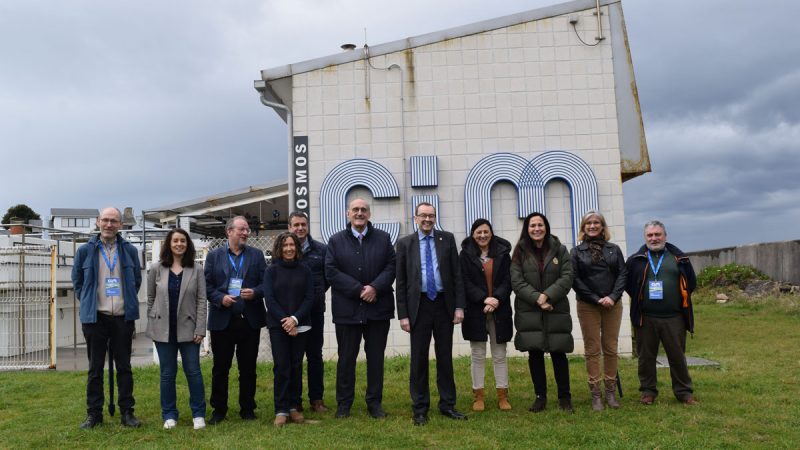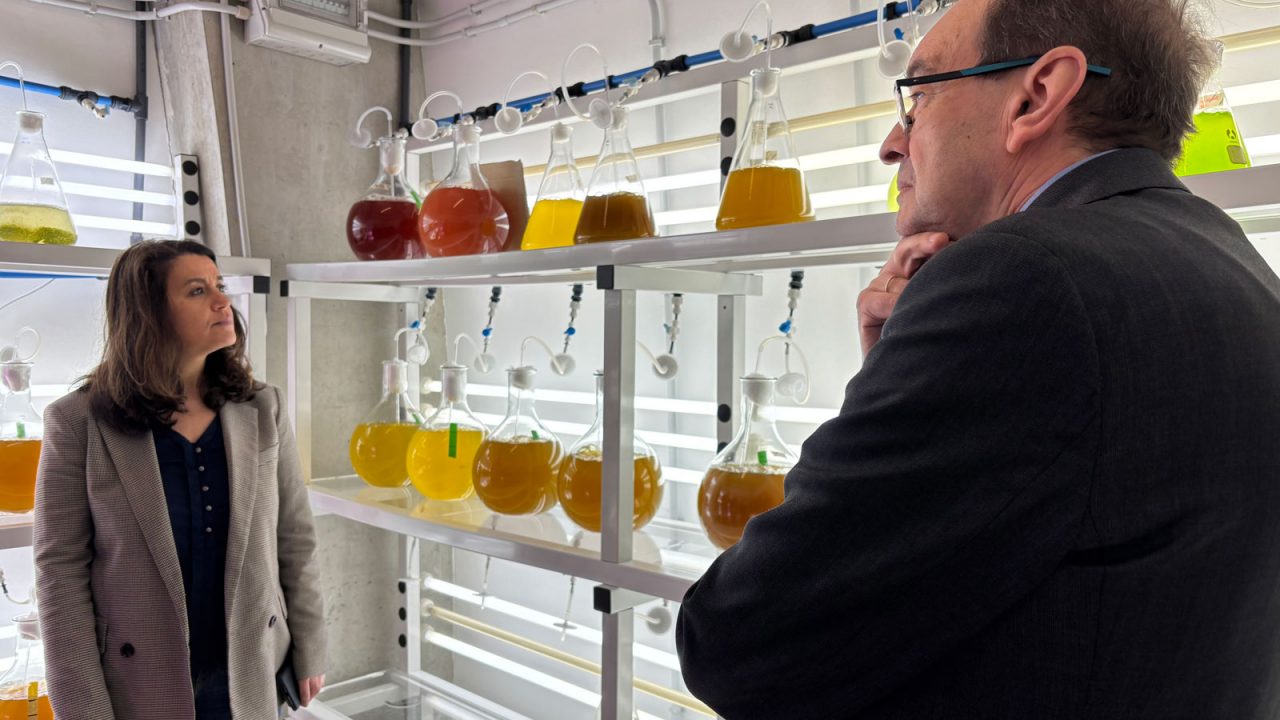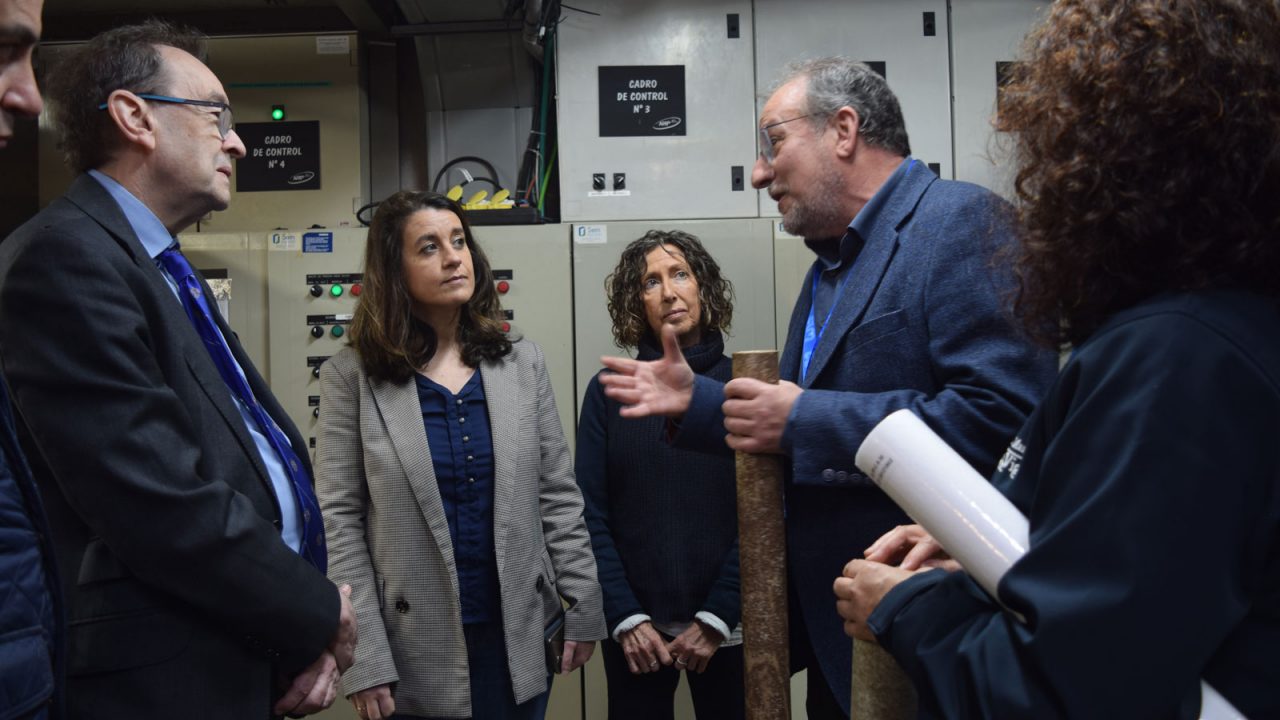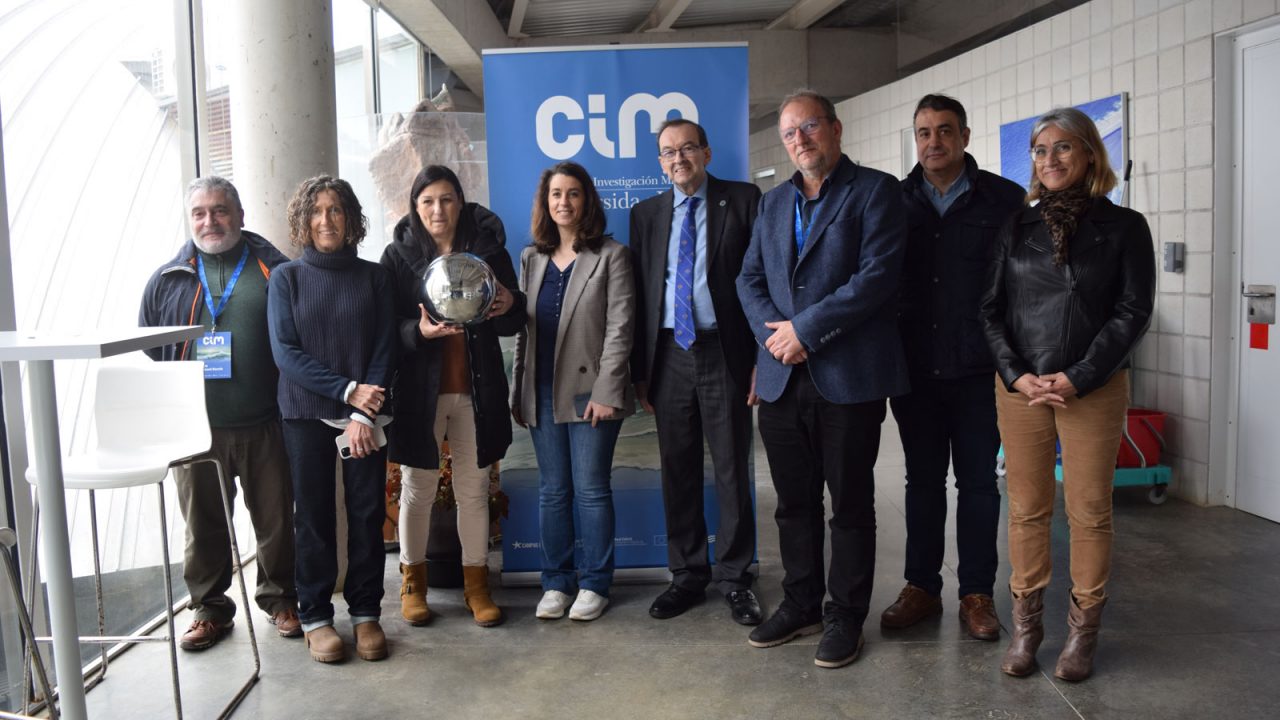They visited the ECIMAT facilities and the B/O CIM UVIGO. Since 2016, the CIM has received €5 million from the Xunta de Galicia to consolidate state-of-the-art research infrastructures in Galicia
The Toralla Marine Science Station, the main infrastructure of the Marine Research Centre (CIM) at the University of Vigo, hosted this morning the visit of a delegation from the Ministry of Education, Science, Universities and Vocational Training of the Xunta de Galicia, led by José Alberto Díez de Castro, General Secretary of Universities, accompanied by Irene Bonome, Deputy Director of Scientific and Technological University Promotion; Mercedes Vázquez, Head of the Research Planning and Structuring Service; and Javier Salado the Head of the Scientific-Technological Management Service.
The delegation was received by Manuel Reigosa, Rector of the University of Vigo, along with Belén Rubio, Vice-Rector for Research, Transfer and Innovation; Mª José Bravo Bosch, Secretary General of the University; Ana Bernabeu, Director of the Research Area; Daniel Rey, CIM Director; and José Manuel García, ECIMAT Director.
During the visit, the CIM’s research and technical staff presented the centre’s strengths in its four priority impact areas: sustainable aquaculture, marine digitalisation, biodiversity and climate change adaptation, and ocean sustainability. In particular, the CIM Director highlighted “the centre’s capabilities in marine biotechnology, both from a basic and applied perspective, with a strong specialisation in both fed and unfed aquaculture, covering species nutrition and well-being, as well as reproduction, genetics, immunology, and cryopreservation”. “This knowledge is actively transferred to the Galician productive sector through services provided by ECIMAT, including trials in the experimental raft and specific cultivation facilities”, he added.
Moreover, the CIM’s strategic focus on digitalisation and open data management was emphasised, with platforms allowing automated monitoring of the marine environment through sensors installed in infrastructures such as the experimental raft in the Aldán estuary or the CIM UVigo oceanographic vessel, integrating real-time data transmission systems. Daniel Rey stated that “these resources position the CIM as a key player in the creation of the Digital Twin of Galicia and in the development of intelligent early warning systems, applying environmental modelling and artificial intelligence”.
In the area of climate change adaptation, the research focused on the response of ecosystems and marine communities to extreme phenomena and long-term trends was highlighted. In this context, the CIM is developing innovative marine rewilding projects and Nature-Based Solutions (NBS) as alternatives for ecological restoration and the improvement of the environmental state of Galicia’s coasts.
The CIM’s contributions to marine environmental conservation and sustainable management were also highlighted, through consolidated work lines in habitat mapping, environmental modelling, and support for the deployment of marine renewable energies, an area in which the centre actively participates in providing advice and developing tools that facilitate decision-making based on scientific knowledge.
Marine research from Galicia to the world
ECIMAT, the infrastructure where the visit took place, is recognised as a University of Vigo Research Support Centre (CAI) and is part of the European EMBRC-ERIC infrastructure (European Marine Biological Resource Centre). The CIM Director acknowledged that “this integration makes the centre an international benchmark, fostering interaction and mobility of research staff at the European and international levels, strengthening the global projection of marine research developed from Galicia”.
The meeting aimed to strengthen institutional collaboration between the University of Vigo and the Xunta de Galicia, one of the main funders of the centre, recognised as a centre of excellence in the framework of the CIGUS Network. The CIM Director conveyed to the Xunta the centre’s desire to “consolidate itself as a structural node for marine research in Galicia, with a model based on interdisciplinary collaboration, internationalisation, talent attraction, knowledge transfer to the productive fabric, and a sustainable vision connected to society”.
After the meeting, the delegation visited the Rodman shipyards in Meira, where they had the opportunity to see the equipment installed on the CIM UVigo oceanographic vessel, Spain’s first hybrid commercial vessel. The visit allowed them to learn about the progress of the scientific outfitting of this strategic infrastructure, where the contribution of the Xunta has been key in equipping it with state-of-the-art marine observation and exploration capabilities, positioning Galicia on the international oceanographic research map.
During the visit, Manuel Reigosa, Rector of the University of Vigo, highlighted that “for us, it is a great opportunity for the General Secretariat of Universities to visit the CIM, a Cigus centre, the best marine research centre we have in the region, and I hope it will be the core of something even more powerful in the future”. He added, “There are many capabilities to develop here, and we hope to secure the necessary funding to take it to an even higher level, something I hope can become a reality at ETEA”.
For his part, José Alberto Díez de Castro, General Secretary, highlighted, as he had done during his visit to other Cigus centres at the UVigo, “the modernisation of the facilities and the ‘high level’ of research staff fully engaged in major projects, as well as their involvement in international networks, which is very positive not only for the University of Vigo but for all of Galicia”. In this regard, Díez de Castro confirmed that the General Secretariat of Universities would continue to support the most important investments, as “the CIM is one of the centres most linked to the Galician economic sector, as fishing and shellfish harvesting are part of Galicia’s very identity”.
Source: DUVI




